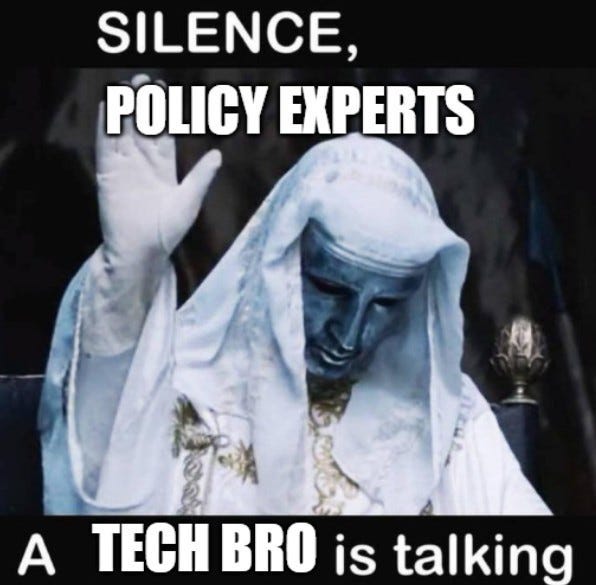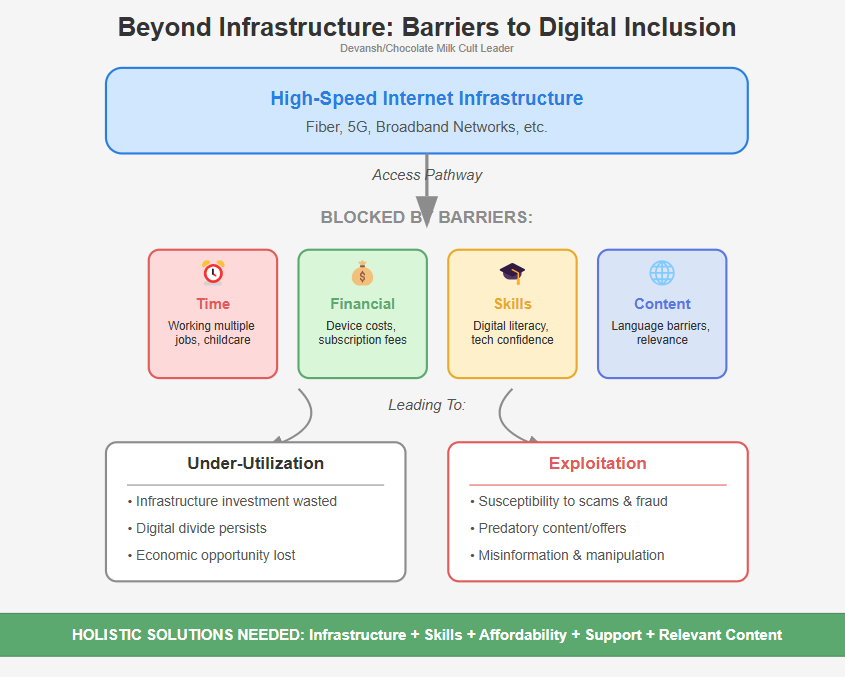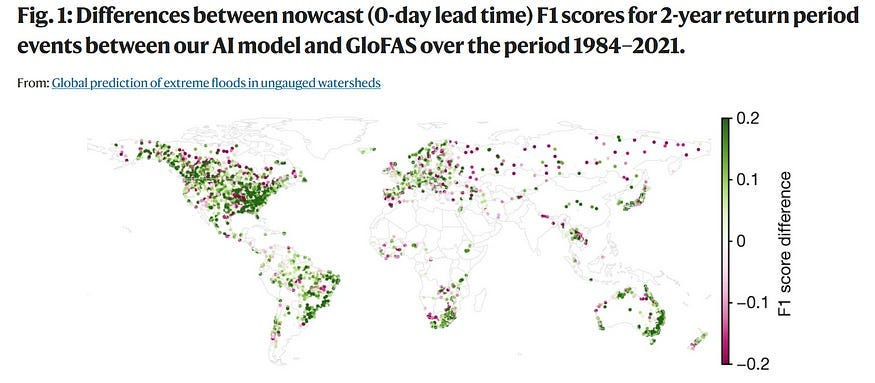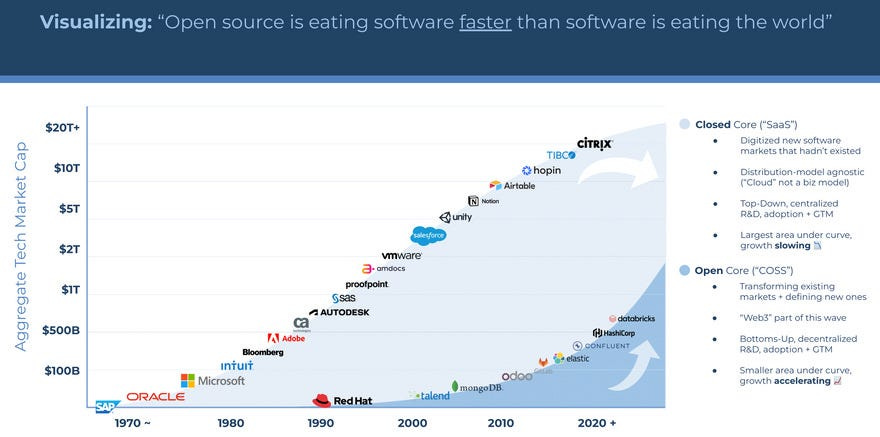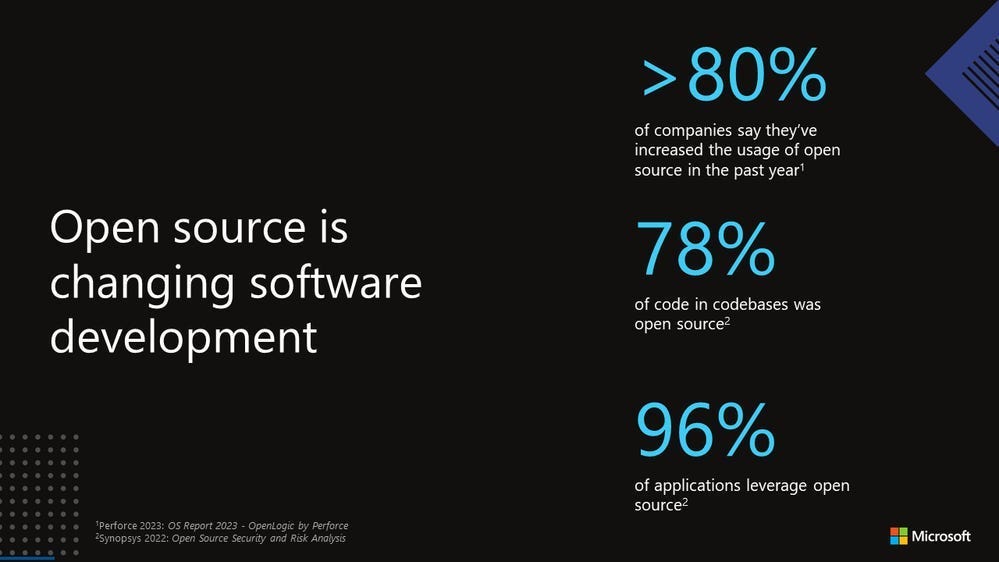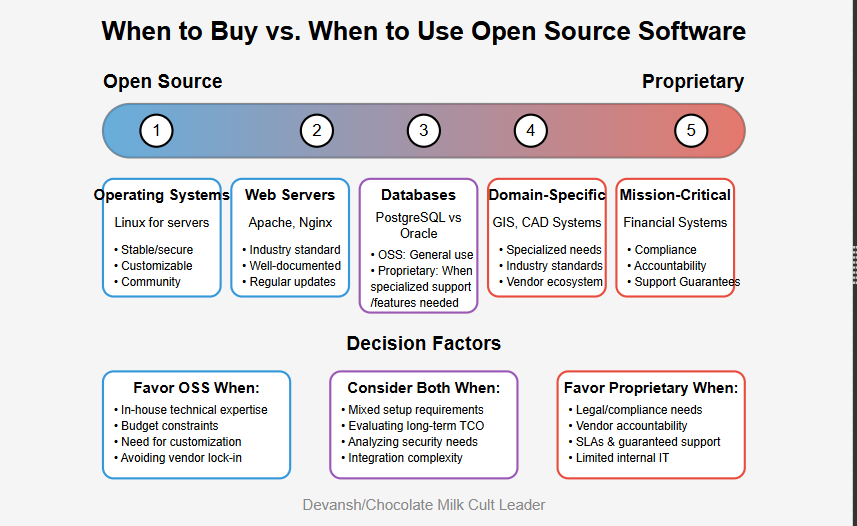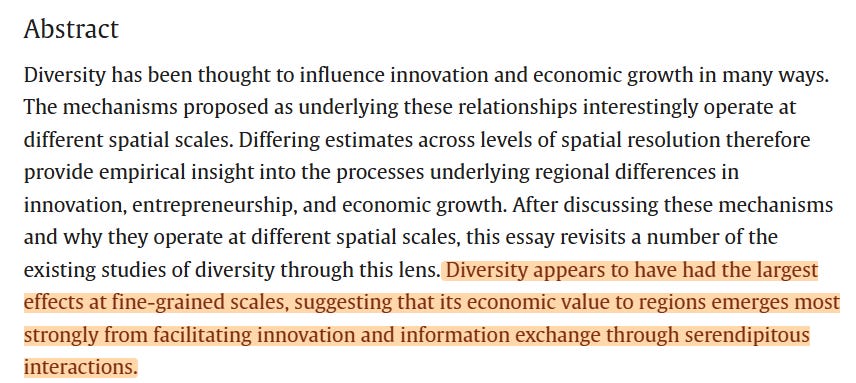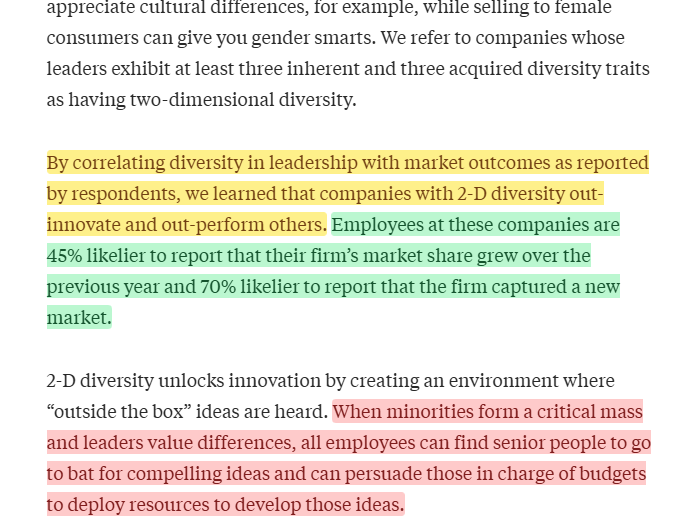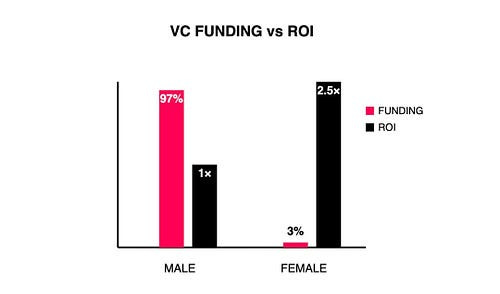How to Encourage Startups and Innovation in 2025 [Thoughts]
Hey, it’s Devansh 👋👋
A lot of us are very excited about the future of Agentic AI. Agents is a series dedicated to exploring the research around Agents to facilitate the discussions that will create the new generation of Language Models/AI Systems. If you have any insights on Agents, reach out, since we need all the high-quality information we can get.
I put a lot of effort into creating work that is informative, useful, and independent from undue influence. If you’d like to support my writing, please consider becoming a paid subscriber to this newsletter. Doing so helps me put more effort into writing/research, reach more people, and supports my crippling chocolate milk addiction. Help me democratize the most important ideas in AI Research and Engineering to over 200K readers weekly. Many companies have a learning budget that you can expense this newsletter to. You can use the following for an email template to request reimbursement for your subscription.
PS- We follow a “pay what you can” model, which allows you to support within your means, and support my mission of providing high-quality technical education to everyone for less than the price of a cup of coffee. Check out this post for more details and to find a plan that works for you.
Recently, someone shared the “Maharashtra State Startup Policy” document with me and asked for my comments. Having read it, I had a few thoughts (in no particular order, just my notes)-
-
The overall intention (create an ecosystem for startups and innovation with a specific emphasis on women-led startups, rural entrepreneurship, and pro-social tech) seems reasonable.
-
I think the approach around this is severely lacking b/c the policy proposal mimics the structure of much richer and technologically native countries/societies (I don’t think trying to copy the tech part of Silicon Valley is a smart idea for developing countries, which need more grassroots support and infrastructure).
-
Does not appreciate the impact that public institutions can play in innovation. Contrary to popular narrative, most of the major scientific discoveries have been made by state-sponsored research institutions, which have unique advantages over corporate research (which is much more short-term in timelines and scope).
-
Has some focus on micro-capital and micro-incubators for localized rural innovation, which is fantastic and I think should be emphasized repeatedly, over flashier trends like generating unicorns.
-
Confuses the outcomes (VC Funding, Rural Entrepreneurship etc) with the causes (stability, investor confidence, distributed support systems). Prioritizing the former w/o doing anything for the latter will only lead to more concentration of capital as investors engage in performative “impact investing” while parking their capital in “safe” investments.
I’m not a policy maker, but I am someone who has studied tech, research and startups extensively; has a strong interest in organizational case-studies (what makes orgs/initiatives fail and others suceed); and I was pretty close to a self proclaimed “white trash” late twenties blue collar man who suffered from an addition to Meth and Alcohol in his teens/early twenties (we competed out of the same BJJ Gym when I was passing through the American South; life as a true nomad means I replace my entire social circle and tax address every few months but I did love them all deeply).
Hopefully, it leads to an interesting perspective for this article.
Executive Highlights (TL;DR of the article)
This post argues that common innovation policies (like mimicking richer nations or over-focusing on VC funding) are flawed, especially for developing economies. A more effective strategy involves three core pillars:
-
Part 1: Foundational Enablement: Basic infrastructure (broadband) is essential but insufficient. The real work is building digital capability — affordable access, skills training (via community centers), relevant local content, and making open government data truly usable. This creates the market and talent that can then form the basis of future development.
-
Part 2: Strategic Open Source Adoption: Embrace Open Source Software (OSS) to drastically cut costs, gain flexibility, build relevant tech skills locally, avoid vendor lock-in, and foster digital independence. Governments must go beyond allowing OSS, and actively promote through adoption, sponsorship of projects, incentives, and incorportation of OS into the education system.
-
Part 3: Intentional Inclusion: Move beyond performative diversity. Actively address systemic barriers (exposure gaps, network deficits, practical costs, bias, lack of safety nets) to unlock talent from marginalized communities. This is crucial for competitiveness and robust innovation.
Ultimately, the path to robust innovation isn’t paved with simplistic mimicry or just funding flashy projects. It demands a patient, deliberate investment in the fundamentals: enabling the entire population digitally, making smart use of global open-source collaboration, and actively fostering inclusion. Shifting policy focus to these core areas is the most effective way to build a resilient and genuinely innovative future.
Keep reading if this is interesting to you.
I put a lot of work into writing this newsletter. To do so, I rely on you for support. If a few more people choose to become paid subscribers, the Chocolate Milk Cult can continue to provide high-quality and accessible education and opportunities to anyone who needs it. If you think this mission is worth contributing to, please consider a premium subscription. You can do so for less than the cost of a Netflix Subscription (pay what you want here).
I provide various consulting and advisory services. If you‘d like to explore how we can work together, reach out to me through any of my socials over here or reply to this email.
Part 1: Infrastructure — Laying the Groundwork for True Innovation
Governments aiming to spark innovation instinctively reach for infrastructure investment — expanding the power grid, rolling out broadband. This is essential groundwork. A digital economy cannot be built on unreliable connections. Securing this baseline, extending it nationwide, and keeping it affordable is the critical first step, the non-negotiable ticket to entry.
However, overindexing on this makes a massive (false) assumption: access → innovation.
The existence of high-speed internet doesn’t magically equip citizens to use it. Potential users of new technology often face hurdles ranging from basic digital literacy and device affordability to language barriers, a lack of locally relevant online content, and fundamental issues of trust and safety online. Overlooking these user-level barriers renders even the most advanced infrastructure underutilized. All the great information on YouTube means nothing when you’re a single parent working double shifts at White Castle to make ends meet. You’re not going to have the bandwidth to watch things yourself, or get your kids to watch, learn, and meaningfully act on the free information there.
In the worst case, this goes further. Simply providing access w/o any other incentives can lead to malicious actors who misuse infrastructure to target vulnerable people. Many of you here would know people who have fallen prey to scams and rugpulls around AI, Finance, and Crypto. All of these target a victim’s ignorance, generate FOMO, and then sweep that rug.
Instead, the percentage of people who reported losing money to a fraud or scam increased by double digits. In 2023, 27% of people who reported a fraud said they lost money, while in 2024, that figure jumped to 38%.
Consumers reported losing more money to investment scams — $5.7 billion — than any other category in 2024. That amount represents a 24% increase over 2023. The second highest reported loss amount came from imposter scams, with $2.95 billion reported lost. In 2024, consumers reported losing more money to scams where they paid with bank transfers or cryptocurrency than all other payment methods combined.
–Source. The internet has made investing much easier, but also increased the ability for scammers to target beginners who don’t have much financial knowledge. This figure does not include the many miny scams where influencers sell garbage products based on hype.
W/o educating people on how to use tools/on their limitations, increased accessibility will make things worse, since it opens up more prospective victims to more sources of influence. Simplistic statements with grandiose promises are inherently more seductive to any beginner than nuanced analysis.
Therefore, effective infrastructure policy must evolve beyond mere deployment. It requires a strategic commitment to actively enabling citizens to engage with the digital world productively. This shift from providing pipes to building pathways is paramount.Let’s discuss some possible ideas to unlock this.
Public Digital Capability Centers as a means of Community Empowerment
Investing in a network of staffed Public Digital Capability Centers is a powerful strategy for bridging this gap. Housed within trusted community spaces like libraries or post offices, these centers offer far more than just free Wi-Fi. Their core value lies in providing structured human support:
-
Trained staff guide beginners through the fundamentals to help build essential digital literacy.
-
They would help users navigate practical online tasks, from accessing e-government services to finding vital health or agricultural information.
-
Crucially, they foster a safe and supportive environment, helping users build the confidence needed to explore and utilize digital tools independently. This is key b/c there is always hesitation, friction, and doubt in deploying new technologies. By working through community centers- digital transformation becomes a community effort, not an individual one. In a digitally dominant world, it can be easy to underestimate the impact of physical spaces. Back when I was selected to give math tutoring to kids in Inner City, Rochester NY, I was told something very interesting- a fairly large part of my job wasn’t even to teach kids, but just hang around the room to let the kids who came in feel safe. Many of these kids didn’t have great homes, and this third space was the only location where they could hang around safely. That’s something I think about a lot.
Strategically, their most vital function is broadening the base of digitally competent individuals. This expands the potential domestic market for future digital products and services while simultaneously cultivating a much larger pool from which future tech talent can emerge. Investing in the sustained operational cost of skilled staff is, therefore, not overhead but a direct investment in this foundational human capital. And hey, new jobs, many of which can be given to locals to ensure longer term development (local stonks going up, as opposed to locals leaving small cities to go to big ones).
This becomes even more important in a country like India (and I speculate, although w/o much ground)- where the bias is toward localized forms of information gathering (asking people around you as opposed to Googling).
Extending Capability: Affordable Tools and Relevant Content
Building capability also requires addressing the tools people use and the value they derive. Complementing the physical hubs, targeted policies can tackle:
-
Device Accessibility: Programs providing subsidies or vouchers for affordable, durable devices are crucial. These initiatives are most effective when bundled with simple, local-language tutorials (ideally offline-accessible) focusing on practical usage. This is where I would also think about investing in technologies like Compression, Efficient Inference, etc, as opposed to blindly competing in status games by trying to create the “best” model.
-
Hyperlocal Relevance: The internet’s utility skyrockets when it addresses immediate, local needs. Funding the development of content and services — market prices, weather alerts, transit info — in local languages and accessible via simple interfaces makes digital tools tangibly beneficial.
These actions directly address the problems of high cost and low relevance. By encouraging demand for useful, locally-made digital services, they help build an early-stage local developer community. This sets the stage for developing more advanced tech skills in the future.
When combined with the next step, it will enable the creation of more locally useful AI-
Making Open Data Usable
Similarly, the potential of open government data remains largely untapped if released only in raw formats (or never gets published). Active enablement means:
-
Curation and Simplification: Investing in cleaning, structuring, and creating user-friendly APIs for key public datasets.
-
Guided Application: Facilitating workshops and challenges that use these prepared datasets to solve tangible local problems.
This transforms passive data repositories into active resources. It provides invaluable material for emerging startups and offers practical, real-world training opportunities for aspiring data analysts and AI practitioners, effectively using public resources to build advanced skills.
This is key for many sensitive applications. Take a look at the comparative results of Google’s amazing Flood Forecasting System vs GloFAS (the SOTA)–
The Indian Subcontinent area is one of the few countries where the model is worse (significantly too).
Enabling better access to local data can help in many ways (all good)-
-
Guide future collection efforts.
-
Allow people to adapt the best practices for local contexts.
-
Use the data to build novel solutions to account for local context.
Building a thriving startup environment in a developing economy takes time and groundwork. Deep investment in infrastructure — by supporting people, providing easy-to-use tools, helpful content, and clear data — is not just an extra step. It’s the main job. This effort creates a digitally skilled population, which forms the market, talent, and stability needed for innovation to grow.
Trying to bypass this enablement phase to fund high-tech ventures is like trying to put our GOAT Antony in a low-tier team like Manchester United (this is purely a hypothetical, all ballers know that GOATtony is great no matter where he goes- it’s us plebs that aren’t able to appreciate his different versions of greatness).
Once we have the groundwork for all of this laid out, the next step becomes a real force multiplier. A step that I think is so influential that I believe it will be the single largest competitive advantage for any investor and competitor–
Part 2: Crowdsourcing Development through Open Source
to ensure that we have access to the best technology and aren’t locked into a closed ecosystem over the long term, Llama needs to develop into a full ecosystem of tools, efficiency improvements, silicon optimizations, and other integrations. If we were the only company using Llama, this ecosystem wouldn’t develop and we’d fare no better than the closed variants of Unix.
-Meta’s “Open Source AI Is the Path Forward”
After establishing basic digital infrastructure, developing economies face a new challenge: the high costs and dependency created by proprietary software. Licensing fees, vendor lock-in, and reliance on costly foreign expertise can severely limit long term skill building, lead to brain drain, and strain government resources. Embracing Open Source Software (OSS) thus shifts from being a niche preference to a critical strategic decision.
OSS — software whose code is freely available for anyone to use, modify, and distribute — is a powerful global resource that’s often underutilized. Viewing it simply as “free software” overlooks its deeper strategic value, especially in environments with limited resources.
Why Open Source is Strategically Valuable:
We first estimate the supply-side value by calculating the cost to recreate the most widely used OSS once. We then calculate the demandside value based on a replacement value for each firm that uses the software and would need to build it internally if OSS did not exist. We estimate the supply-side value of widely-used OSS is $4.15 billion, but that the demand-side value is much larger at $8.8 trillion. We find that firms would need to spend 3.5 times more on software than they currently do if OSS did not exist. The top six programming languages in our sample comprise 84% of the demand-side value of OSS. Further, 96% of the demand-side value is created by only 5% of OSS developers.
Significant Cost Reduction: OSS eliminates expensive licensing fees for essential software like operating systems (Linux), databases (MySQL), web servers (Apache), development tools (Python), and AI libraries (TensorFlow). This frees capital that can be reinvested in hardware, talent, and innovation.
Market Intelligence: Studying contributions, trends, and challenges on Open Source Projects allows people to monitor what works, what customers want, and to preempt major issues. This level of market intelligence is supremely important and is similar to why Nvidia spent a LOT of money to acquire Synthetic Data company Gretel.
Practical, Relevant Skill Development: Working with global OSS projects gives developers real-world experience with widely used tools and collaborative processes. These skills are directly applicable to building innovative products and offer a better practical experience than traditional classroom settings.

Customization and Digital Independence: OSS can easily be adapted to local needs without costly vendor permissions. This flexibility avoids vendor lock-in, allowing local developers to independently maintain and evolve critical digital infrastructure, strengthening national digital sovereignty.
Creating Sustainable Local Skills: Building a local developer community proficient in popular OSS technologies reduces reliance on external consultants, creating sustainable, high-value technology jobs locally.
Transparency and Improved Security: OSS allows local experts to inspect and address vulnerabilities more swiftly than closed-source software. However, achieving this benefit requires actively building local security expertise.
So how can governments ensure that OSS becomes a huge factor? Let’s cover that next.
How Governments Can Take an Active Role in Promoting Open Source:
Simply allowing OSS isn’t enough; governments must actively champion its use to maximize its benefits:
Lead by Example: Mandate government agencies to prioritize OSS for their internal IT systems. This reduces software expenses, builds internal expertise, signals commitment, and supports local OSS services. However, it is important to be strategic in choosing what to rely on with OSS. Software can have a lot of setup costs that can be avoided by buying from vendors. Dogmatically trying to open-source everything is as foolish as relying on vendors for everything.
Localized OSS Starter Kits: Develop user-friendly bundles of OSS tools tailored for local businesses, including simple guides in local languages. This lowers adoption barriers and operational costs for startups from day one. Many people want to get into OSS, but are often intimidated by jumping into existing projects (a fact made worse by the fact that none of our education actually teaches us this)-
Fund Local Contributions to Global OSS: Create programs supporting local developers to contribute to globally relevant OSS projects, offering mentorship and grants. I would also add a lot of hiring opportunities directly into the projects. This creates an incentive for people to contribute I’m going to be doing this soon- where I’m going to put 2–3 projects I like online, and the best contributors to them will get money every month, job offers, and more. More details on this coming soon, and if any of you want to flag projects that should be included please do reach out.
Embed OSS in Education: Self Explanatory.
Adopting OSS requires investing in local skills for implementation, support, and security, and navigating resistance from traditional procurement practices and vendors. Yet, these initial hurdles are strategic investments — the long-term rewards in cost savings, skill growth, digital independence, and a robust local tech ecosystem clearly outweigh the challenges.
Embracing OSS strategically leverages a global resource, significantly lowering digital transformation costs, accelerating skill development, and fostering a resilient, locally driven innovation environment.
So far we have-
-
Set up the infrastructure (both technical and inter-personal) for digital literacy,
-
Created incentives for people to start contributing in locally relevant projects.
This should enable people to start solving their own problems (which is the core of innovation). However, to take things up a notch, we need to add in one final piece.
A piece that has become a bit of a dirty word- partially b/c of the many performative bullshit acts we see in the name of it, and partially b/c of snowflakes that never stop bitching about it b/c they need to find something to blame for their own failures.
Let’s talk about Diversity and Inclusion.
Part 3: Inclusion — Unlocking Overlooked Potential
Developing infrastructure and using open-source tools are vital steps, but without inclusive participation, their value remains limited. Vast reservoirs of talent often remain untapped due to systemic exclusion. Addressing this isn’t merely about fairness; it’s an economic imperative. For developing economies, inclusion isn’t optional — it’s essential for maximizing competitiveness.
Many inclusion initiatives remain superficial, failing to address deeper barriers that keep marginalized groups out of innovation ecosystems. As the greatest ally to have ever existed, a true reincarnation of Jesus Christ, I’ve decided that I’m qualified to talk about issues that all marginalized communities experience-
-
Exposure and Confidence Gap: Lack of exposure to technology or relatable role models limits confidence and ambition.
-
Network Deficit: Excluded groups lack critical access to informal networks and mentorship opportunities.
-
Practical Obstacles: Small logistical hurdles, like childcare or travel costs, disproportionately prevent participation. I really like this illustration–
-
Systemic Bias: Implicit biases in funding or program selection exclude non-traditional entrepreneurs. Credit to for the share below-
-
Skills Inequality: Unequal access to quality education and training widens the skills gap.
You could look for some examples of marginalized people talking about their various challenges, but they likely wouldn’t be able to talk about their struggles as well as I can. So we can move on to some actions that policy makers can take to tackle them-
-
Proactive Talent Identification: Deploy talent scouts into underserved communities, facilitating practical workshops to build confidence and identify innovators. Many times, this requires scouts who can look at preexisting solutions that people from these communities are already working with and spot their hidden potential.
-
Engineering Network Access: Establish structured mentorship and networking programs that explicitly create essential connections for marginalized innovators.
-
Practical Barrier Removal Grants: Provide micro-grants addressing tangible hurdles such as childcare, transportation, and accessibility needs.
-
Accessible Skills Training: Expand affordable, practical training in tech skills using open-source tools, targeted explicitly toward excluded groups.
-
Better Safety Nets- A lot of marginalized communities might be more risk-averse given the higher cost of failure. Having strong safety nets can encourage risk taking, allowing more people to rise out.
Diversity has been shown to benefit systems- whether it’s Genetic Diversity or diversity in AI “Genomes” has been show to consistently improve the performance of the system by adding more robustness–
In evolutionary systems, genomes compete with each other to survive by increasing their fitness over generations. It is important that genomes with lower fitness are not immediately removed, so that competition for long-term fitness can emerge. Imagine a greedy evolutionary system where only a single high-fitness genome survives through each generation. Even if that genome’s mutation function had a high lethality rate, it would still remain. In comparison,in an evolutionary system where multiple lineages can survive, a genome with lower fitness but stronger learning ability can survive long enough for benefits to show
I’m not sure why Innovation would be any different (as long as the system also has strong competition and selection, which many diversity initiatives fail).
Ultimately, I think this will create a strong basis that will naturally create the conditions for long-term innovation, as opposed to needing artificial injections of wealth. This innovation will naturally lead to greater investor interest, leading to deeper relationships for all parties involved.
What do you think? How would you encourage innovation in the space? Would love to hear what you think.
Thank you for being here and I hope you have a wonderful day,
The Saint,
Dev <3
If you liked this article and wish to share it, please refer to the following guidelines.
That is it for this piece. I appreciate your time. As always, if you’re interested in working with me or checking out my other work, my links will be at the end of this email/post. And if you found value in this write-up, I would appreciate you sharing it with more people. It is word-of-mouth referrals like yours that help me grow. You can share your testimonials over here.
Reach out to me
Use the links below to check out my other content, learn more about tutoring, reach out to me about projects, or just to say hi.
Small Snippets about Tech, AI and Machine Learning over here
AI Newsletter- https://artificialintelligencemadesimple.substack.com/
My grandma’s favorite Tech Newsletter- https://codinginterviewsmadesimple.substack.com/
My (imaginary) sister’s favorite MLOps Podcast-
Check out my other articles on Medium. : https://rb.gy/zn1aiu
My YouTube: https://rb.gy/88iwdd
Reach out to me on LinkedIn. Let’s connect: https://rb.gy/m5ok2y
My Instagram: https://rb.gy/gmvuy9
My Twitter: https://twitter.com/Machine01776819
March 29, 2025 at 11:09AM
https://artificialintelligencemadesimple.substack.com/p/how-to-encourage-startups-and-innovation
Devansh

